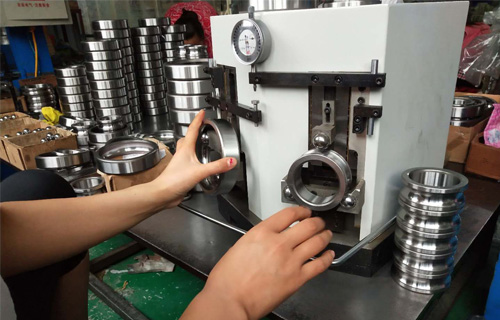
nov . 22, 2024 06:33 Back to list
thrust bearing vs ball bearing
Thrust Bearing vs. Ball Bearing An In-Depth Comparison
When it comes to mechanical components that support rotating elements, bearings are crucial for ensuring smooth operation and longevity. Among the various types of bearings, thrust bearings and ball bearings are two of the most commonly used. This article aims to explore the differences, functionalities, and applications of thrust bearings and ball bearings, providing a clear understanding for engineers, designers, and hobbyists alike.
What are Thrust Bearings?
Thrust bearings are specifically designed to accommodate axial loads, which are forces that act parallel to the axis of rotation. These bearings are engineered to withstand heavy loads in one direction, making them ideal for applications where axial positioning is crucial. Thrust bearings can come in various forms, including but not limited to, flat washers, cylindrical shoes, and sphere-shaped designs.
They are commonly used in applications such as automotive transmissions, gear mechanisms, and aircraft engines. In these contexts, thrust bearings help manage the tendency of components to move axially under high loads, therefore ensuring the stability and performance of the machinery.
What are Ball Bearings?
On the other hand, ball bearings are designed to support both radial and axial loads. They consist of balls placed between inner and outer rings, allowing for rotation while minimizing friction. The geometry of ball bearings helps to distribute the load evenly across the bearing surface, which enhances durability and efficiency in various applications.
Ball bearings find their use in a wide range of industries, from household appliances to aerospace engineering. Common applications include electric motors, bicycles, and conveyor systems. Their versatility and capability to handle both types of loads make them a popular choice for many engineering applications.
Structural Design
The structural differences between thrust bearings and ball bearings are significant and influence their performance characteristics. Thrust bearings are typically flatter and wider, which allows them to distribute the axial load over a larger surface area. This design mitigates wear and tear and increases load capacity for axial forces.
thrust bearing vs ball bearing

Conversely, ball bearings are cylindrical and allow for rotation along an axis while supporting radial loads. The balls within the bearing reduce friction through their rolling action, thus facilitating smoother rotation and reducing energy losses.
Load Capacity and Efficiency
When assessing load capacity, thrust bearings excel due to their specialized design for axial loads, which often allows them to handle more significant forces compared to ball bearings in similar application scenarios. However, ball bearings tend to have a higher rotational efficiency and lower friction, making them more suitable for high-speed applications where radial forces are prevalent.
In applications where axial loads dominate, thrust bearings are the preferred choice. Conversely, for applications requiring support for both radial and axial loads, ball bearings often fulfill the requirements more effectively.
Application Context
When choosing between thrust bearings and ball bearings, it is essential to consider the specific application context. If the primary concern is to manage axial loads, such as in a thrust washer for a gear train, thrust bearings would be the optimal choice. In contrast, for applications like electric motors where both radial and axial loads are present, ball bearings would be more appropriate.
Conclusion
Both thrust bearings and ball bearings serve essential roles in mechanical systems, each catering to specific needs based on their design and operational capabilities. Understanding the differences between these two types of bearings can significantly impact machine performance and reliability. Engineers and designers should always consider the nature of the loads involved and the operational environment when selecting the appropriate bearing type.
Ultimately, whether it’s smooth rotation through ball bearings or accurate axial load management via thrust bearings, the right choice enhances efficiency, durability, and functionality in mechanical systems across a variety of industries.
Latest news
-
Grooved Ball Bearing Design and Functionality
NewsJun.04,2025
-
Concrete Mixer Bearing Load Capacity Testing
NewsJun.04,2025
-
6004 Bearing Dimensions in Robotic Joint Designs
NewsJun.04,2025
-
Advantages of Single-Row Deep Groove Ball Bearings
NewsJun.04,2025
-
Applications of Deep Groove Ball Bearings in Automotive Systems
NewsJun.04,2025
-
Innovations in Bearing Pressing Machine Design
NewsJun.04,2025
